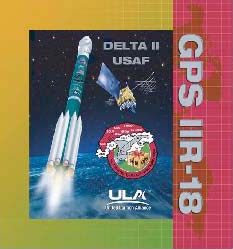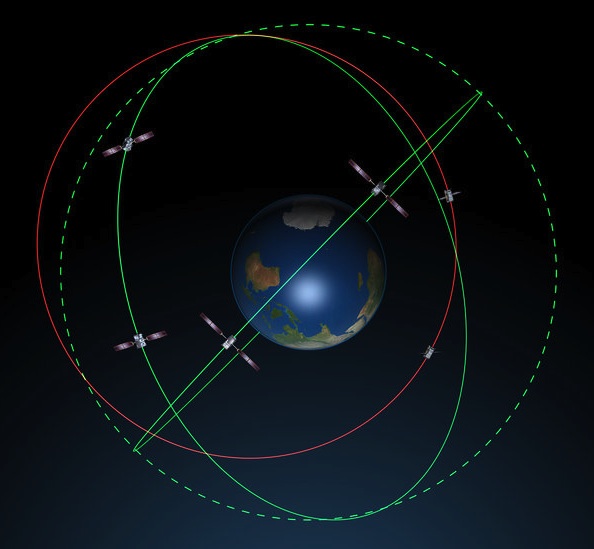
The U.S. Air Force launched the fifth modernized GPS Block II Replenishment (IIR-M) satellite at 3:04 p.m. EST (20:04 UTC) December 20 from Cape Canaveral Air Force Station, Florida, (December 20) aboard a United Launch Alliance Delta II rocket. Air Force controllers set the spacecraft to "healthy" status on January 2, in what is probably a record time of 13 days.
The U.S. Air Force launched the fifth modernized GPS Block II Replenishment (IIR-M) satellite at 3:04 p.m. EST (20:04 UTC) December 20 from Cape Canaveral Air Force Station, Florida, (December 20) aboard a United Launch Alliance Delta II rocket. Air Force controllers set the spacecraft to "healthy" status on January 2, in what is probably a record time of 13 days.
Built by Lockheed Martin, the satellite offers a variety of enhanced features including improved accuracy, enhanced encryption, anti-jamming capabilities, and a second civil signal to provide dual frequency capability and improve resistance to interference.
The GPS IIR-18(M) satellite will join four IIR-M satellites and 12 operational IIR satellites currently on orbit within the overall operational GPS constellation of 31 spacecraft. GPS IIR-18(M) will be placed in orbital slot C1, replacing space vehicle number (SVN) 36, which in turn will replace SVN 37.
Meanwhile, Lockheed Martin has announced that its navigation payload provider, ITT Corporation, has delivered a new demonstration GPS L5 signal payload for another GPS IIR-M satellite to Lockheed Martin’s facilities in Valley Forge, Pennsylvania. The payload will be integrated on the spacecraft for final system-level testing in preparation for launch next year
The L5 signal, located at the 1176.45MHz frequency, will be added to the Block IIF (follow-on) generation of satellites being built by Boeing, which now is not expected to have its first launch until early 2009. The first IIF space vehicle (SV) is currently undergoing thermal-vac testing in U.S. Air Force facilities in California.
The Lockheed Martin spacecraft with the L5 demonstration payload, known as SV 09, is one of the final three Block IIR-M satellites planned for launch in 2008.
According to Lockheed Martin, the L5 demonstration milestone was achieved two months ahead of schedule and only nine months after the Air Force awarded the company a $6-million contract to develop the payload which will temporarily transmit the third civil signal.
Lockheed Martin Space Systems is the prime contractor for the GPS IIR program and built 21 IIR spacecraft under contract to the GPS Wing, Space and Missile Systems Center, Los Angeles Air Force Base, California.






